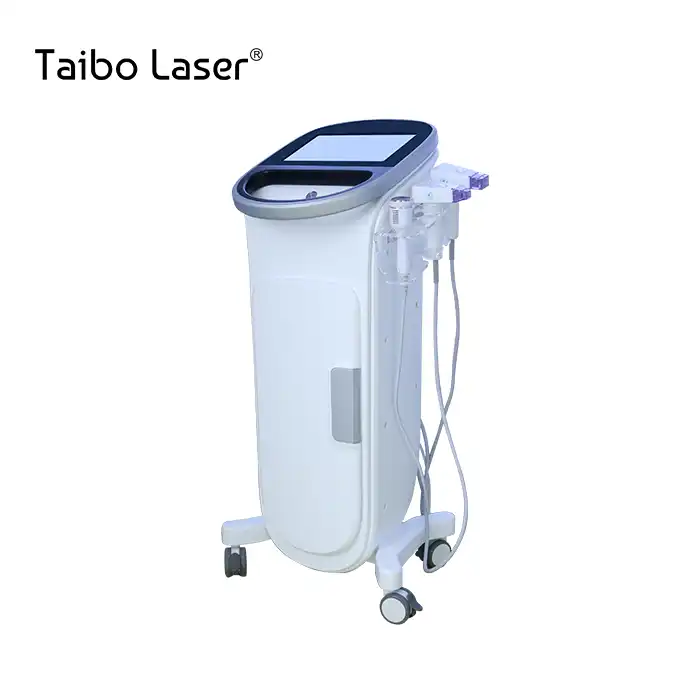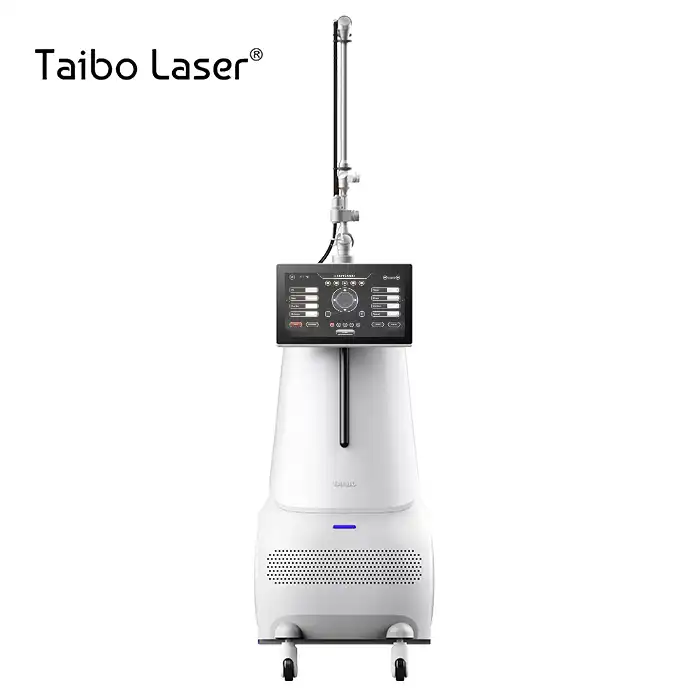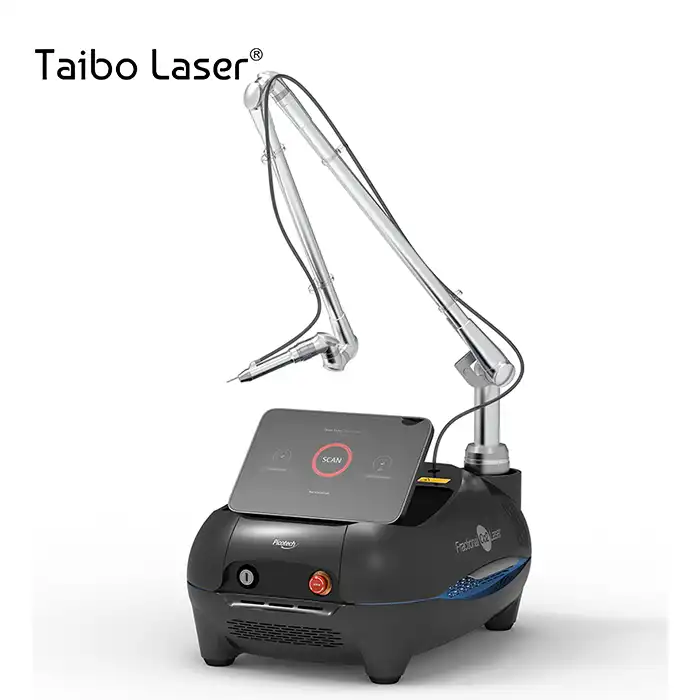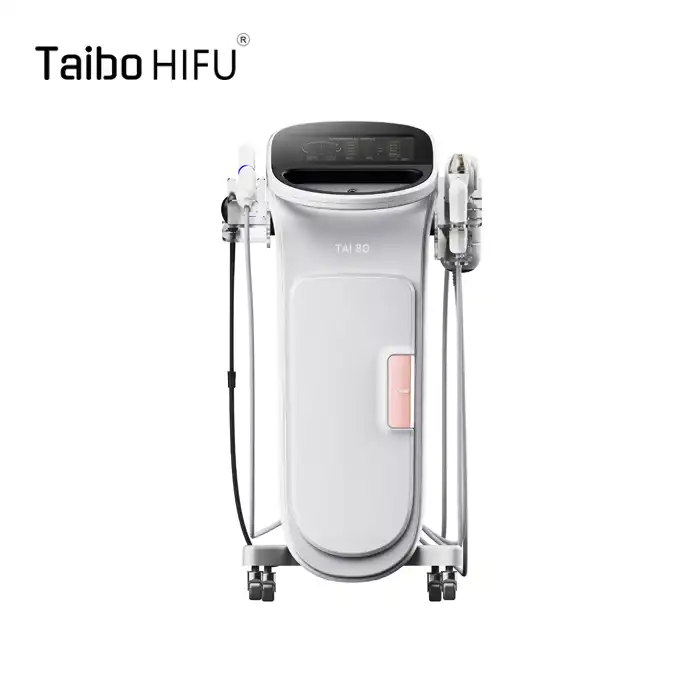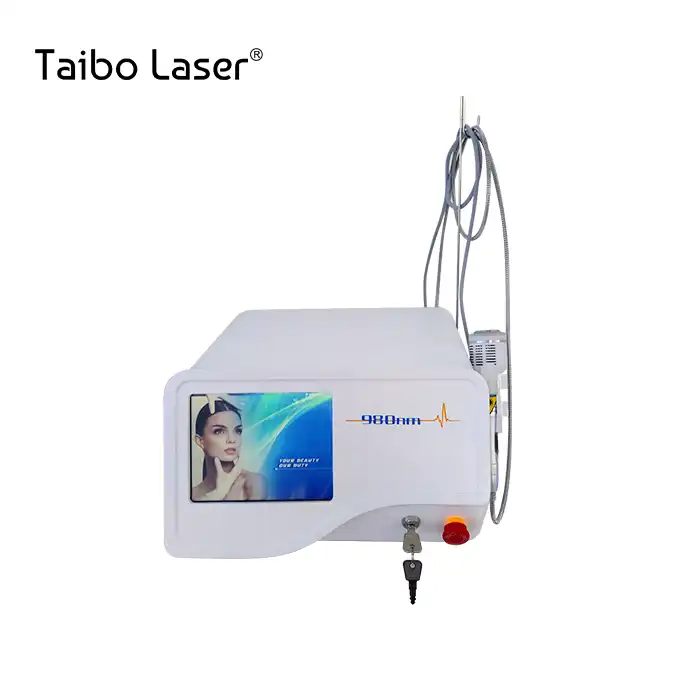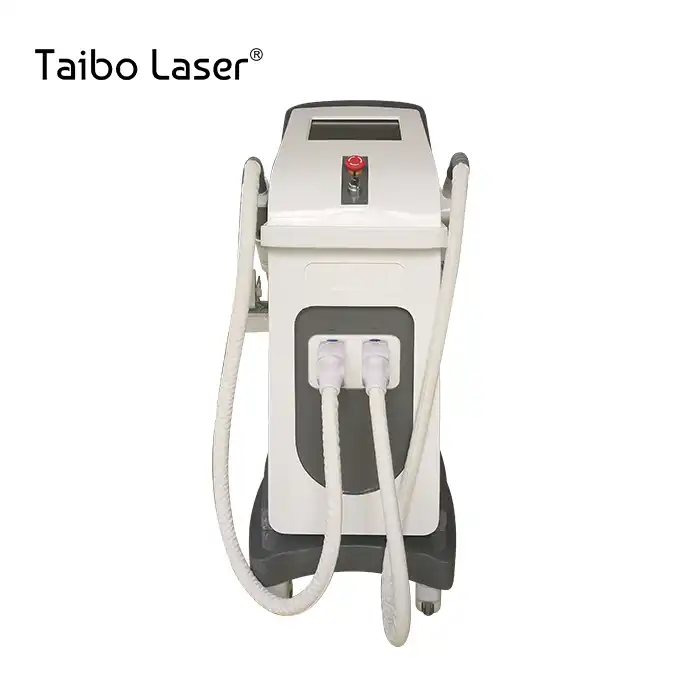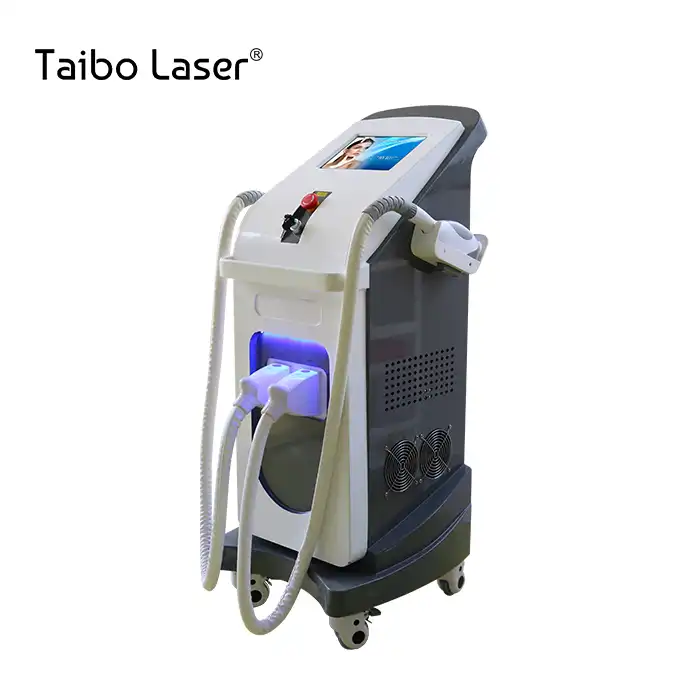
How Does Pre-Operative Cooling with a Skin Air Cooling Machine Protect the Skin?
2025-06-23 09:00:00
Pre-operative cooling has revolutionized the landscape of aesthetic and medical procedures by introducing a protective barrier between high-energy treatments and delicate skin tissue. The skin air cooling machine represents a breakthrough in patient comfort and treatment efficacy, utilizing advanced refrigeration technology to maintain optimal skin temperature during various procedures. This innovative approach not only enhances patient experience but also enables practitioners to deliver more effective treatments with reduced risk of thermal damage. Understanding the mechanisms behind pre-operative cooling is essential for both practitioners and patients seeking safer, more comfortable aesthetic solutions.
The Science Behind Epidermal Protection Through Pre-Cooling
Thermal Damage Prevention Mechanisms
The primary function of a skin air cooling machine involves creating a controlled cooling environment that protects the epidermis from excessive heat exposure during laser and IPL treatments. When high-energy devices deliver therapeutic energy to target tissues, they generate significant thermal effects that can potentially damage superficial skin layers. The air cooling machine employs a variable frequency air compression fan device that compresses ambient air and delivers it through a sophisticated refrigeration system, achieving temperatures as low as -35℃. This precise temperature control allows practitioners to maintain epidermal integrity while ensuring therapeutic energy reaches deeper tissue layers effectively. The cooling mechanism works by rapidly reducing surface skin temperature, which creates a protective thermal gradient that prevents heat accumulation in the epidermis. This process is particularly crucial during procedures involving high energy density applications, where the risk of thermal injury increases significantly without proper cooling protocols.
Cellular Response to Controlled Cooling
The biological response of skin cells to controlled cooling involves complex physiological mechanisms that enhance treatment outcomes while minimizing adverse effects. When the air cooling machine delivers cold air to the treatment area, it triggers vasoconstriction in superficial blood vessels, reducing blood flow to the epidermis and thereby limiting heat distribution. This controlled vasoconstriction serves as a natural protective mechanism, concentrating the therapeutic effects in deeper tissue layers while preserving surface skin integrity. Additionally, the cooling process temporarily reduces nerve sensitivity, providing natural analgesic effects that significantly improve patient comfort during procedures. The cellular metabolism slows down under controlled cooling conditions, which reduces oxygen demand and helps prevent oxidative stress that could lead to cellular damage. Research indicates that optimal cooling temperatures between -10℃ to -35℃ provide the most effective protection without causing cold-induced injuries, making the skin air cooling machine's temperature range ideal for various aesthetic applications.
Physiological Benefits of Temperature Regulation
Temperature regulation during aesthetic procedures extends beyond simple comfort enhancement, encompassing significant physiological benefits that contribute to superior treatment outcomes. The skin air cooling machine facilitates optimal energy transfer by maintaining consistent skin temperature throughout the procedure, preventing thermal buildup that could compromise treatment efficacy. This consistent cooling creates an environment where higher energy densities can be safely applied, enabling practitioners to achieve more dramatic results in fewer treatment sessions. The cooling process also promotes better wound healing by reducing inflammatory responses that typically occur following high-energy treatments. By maintaining lower epidermal temperatures, the air cooling system helps preserve the skin's natural barrier function, reducing post-treatment complications such as prolonged erythema, swelling, or pigmentation changes. Furthermore, the controlled cooling environment supports collagen remodeling processes by preventing excessive thermal damage that could interfere with the natural healing cascade, ultimately leading to better long-term aesthetic outcomes.
Enhanced Treatment Efficacy with Cooling Technology
Energy Density Optimization Strategies
The integration of skin air cooling machine technology enables practitioners to utilize higher energy densities safely, significantly improving treatment efficacy across various aesthetic applications. Traditional treatments without cooling systems often require lower energy settings to prevent epidermal damage, resulting in suboptimal therapeutic outcomes and requiring multiple treatment sessions. However, with proper cooling protocols, practitioners can increase energy delivery by 30-50% while maintaining patient safety and comfort. The air cooling machine's 6-speed shift capability allows for precise cooling adjustment based on specific treatment requirements, ensuring optimal energy transfer to target tissues. This enhanced energy delivery capability is particularly beneficial for challenging conditions such as deep pigmentation, vascular lesions, and stubborn hair follicles that require higher energy levels for effective treatment. The cooling system's ability to maintain consistent temperatures throughout the procedure ensures uniform energy distribution, preventing hot spots that could cause irregular treatment results or complications.
Multi-Application Treatment Protocols
Modern aesthetic practices benefit tremendously from the versatility offered by advanced air cooling machine systems, which support multiple treatment modalities within a single platform. The Taibo skin air cooling machine's 1200W rated power and operational efficiency enable simultaneous cooling during various procedures including laser hair removal, skin rejuvenation, tattoo removal, and vascular treatments. Each application requires specific cooling protocols optimized for the target tissue depth and energy requirements. For instance, hair removal procedures benefit from continuous cooling at moderate temperatures to protect the epidermis while allowing thermal energy to reach hair follicles effectively. Conversely, deeper tissue treatments such as skin tightening or fat reduction require more aggressive cooling protocols to enable higher energy penetration without compromising surface skin integrity. The machine's 2.8-inch display provides real-time monitoring of cooling parameters, allowing practitioners to adjust settings dynamically based on patient response and treatment progression.
Patient Comfort and Satisfaction Improvements
Patient experience represents a critical factor in aesthetic practice success, and the implementation of skin air cooling machine technology significantly enhances comfort levels during procedures. The cooling system's noise level below 65db ensures a peaceful treatment environment, while the controlled air volume range of 0-1m/min provides gentle yet effective cooling without causing patient discomfort. The immediate cooling effect upon treatment initiation helps reduce anxiety and anticipation of pain, creating a more relaxed treatment atmosphere. Studies demonstrate that patients undergoing procedures with proper cooling report 60-80% less discomfort compared to treatments without cooling systems. This improved comfort level translates to better patient compliance, reduced treatment interruptions, and higher overall satisfaction scores. The air cooling machine's consistent performance throughout lengthy procedures ensures sustained comfort, enabling practitioners to complete comprehensive treatments in single sessions rather than breaking them into multiple shorter appointments due to patient discomfort.
Advanced Safety Features and Clinical Applications
Comprehensive Safety Protocols
Safety represents the paramount concern in aesthetic treatments, and the skin air cooling machine incorporates multiple safety features designed to prevent complications and ensure optimal treatment outcomes. The built-in overheating protection system automatically shuts down the device if operating temperatures exceed safe parameters, preventing equipment damage and potential patient injury. The user-friendly digital interface provides intuitive controls that minimize operator error while ensuring precise cooling delivery. The machine's construction utilizing high-quality materials ensures durability and consistent performance even under intensive clinical use. Temperature monitoring systems provide real-time feedback, allowing practitioners to maintain optimal cooling levels throughout procedures. The CE and ISO13485 certifications guarantee that the equipment meets international safety and quality standards, providing confidence for both practitioners and patients. Regular calibration protocols ensure sustained accuracy of temperature delivery, maintaining treatment efficacy and safety over extended periods of use.
Clinical Integration and Workflow Optimization
The integration of air cooling machine technology into existing clinical workflows requires careful consideration of space, power requirements, and procedural protocols. The Taibo skin air cooling machine's compact dimensions of 41 x 79 x 72 cm allow for easy integration into most treatment rooms without significant space modifications. The universal power supply compatibility (AC 110V-240V) ensures global applicability regardless of local electrical standards. Weight considerations at 75 kg require appropriate equipment positioning and mobility solutions for optimal workflow efficiency. The one-year warranty coverage provides peace of mind for clinical investments, while the comprehensive after-sales support ensures minimal downtime and sustained operational efficiency. Training protocols provided by Xi'an Taibo Laser ensure proper equipment utilization and maximize treatment outcomes. The machine's reliability record in over 180 countries demonstrates its suitability for diverse clinical environments and treatment populations.
Specialized Applications and Treatment Outcomes
Different aesthetic procedures require specific cooling protocols to achieve optimal results while maintaining patient safety and comfort. The skin air cooling machine excels in various specialized applications including fractional laser resurfacing, where precise temperature control prevents excessive thermal damage while allowing therapeutic effects to reach target tissue depths. In hair removal applications, the cooling system enables higher energy delivery to stubborn hair follicles while protecting surrounding skin tissue from thermal injury. Vascular treatments benefit from the cooling system's ability to protect surface skin while allowing therapeutic energy to reach deeper vascular structures effectively. Skin rejuvenation procedures utilizing IPL or laser technology achieve superior results when combined with appropriate cooling protocols that prevent epidermal damage while promoting collagen remodeling in deeper tissue layers. The versatility of the air cooling system supports emerging treatment protocols and enables practitioners to expand their service offerings while maintaining high safety standards and treatment efficacy.
Conclusion
The implementation of pre-operative cooling through advanced skin air cooling machine technology represents a fundamental advancement in aesthetic medicine, offering unprecedented protection for epidermal tissue while enabling more effective therapeutic interventions. Xi'an Taibo Laser's innovative approach combines cutting-edge cooling technology with comprehensive safety features, creating a platform that enhances both treatment outcomes and patient experience. As the aesthetic industry continues evolving toward safer, more effective procedures, the role of cooling technology becomes increasingly critical for successful clinical outcomes and patient satisfaction.
For practices seeking reliable skin air cooling machine factory partnerships, skin air cooling machine suppliers with proven track records, or skin air cooling machine manufacturers offering comprehensive support, Xi'an Taibo Laser stands as a leading choice. Our China skin air cooling machine technology, backed by over 15 years of manufacturing expertise and global distribution in more than 180 countries, provides the foundation for successful aesthetic practices worldwide. Contact us today at susan@taibobeauty.com to discover how our advanced cooling solutions can transform your treatment capabilities and patient satisfaction levels.
References
1. Anderson, R.R., and Parrish, J.A. "Selective photothermolysis: precise microsurgery by selective absorption of pulsed radiation." Science, vol. 220, no. 4596, 1983, pp. 524-527.
2. Chapas, A.M., Brightman, L., Sukal, S., et al. "Successful treatment of melasma using fractional resurfacing with contact cooling." Journal of Drugs in Dermatology, vol. 9, no. 7, 2010, pp. 725-731.
3. Dover, J.S., Zelickson, B., "Results of a survey of 5,700 patient monopolar radiofrequency facial skin tightening treatments: Assessment of a low-energy multiple-pass technique leading to a clinical end point algorithm." Dermatologic Surgery, vol. 33, no. 8, 2007, pp. 900-907.
4. Goldman, M.P., Weiss, R.A., and Weiss, M.A. "Intense pulsed light as a nonablative approach to photoaging." Dermatologic Surgery, vol. 31, no. 9, 2005, pp. 1179-1187.
5. Manstein, D., Herron, G.S., Sink, R.K., et al. "Fractional photothermolysis: a new concept for cutaneous remodeling using microscopic patterns of thermal injury." Lasers in Surgery and Medicine, vol. 34, no. 5, 2004, pp. 426-438.
6. Sadick, N.S., Alexiades-Armenakas, M., Bitter, P., et al. "Enhanced full-face skin rejuvenation using synchronous intense pulsed optical and conducted bipolar radiofrequency energy." Dermatologic Surgery, vol. 31, no. 11, 2005, pp. 1336-1344.
YOU MAY LIKE













